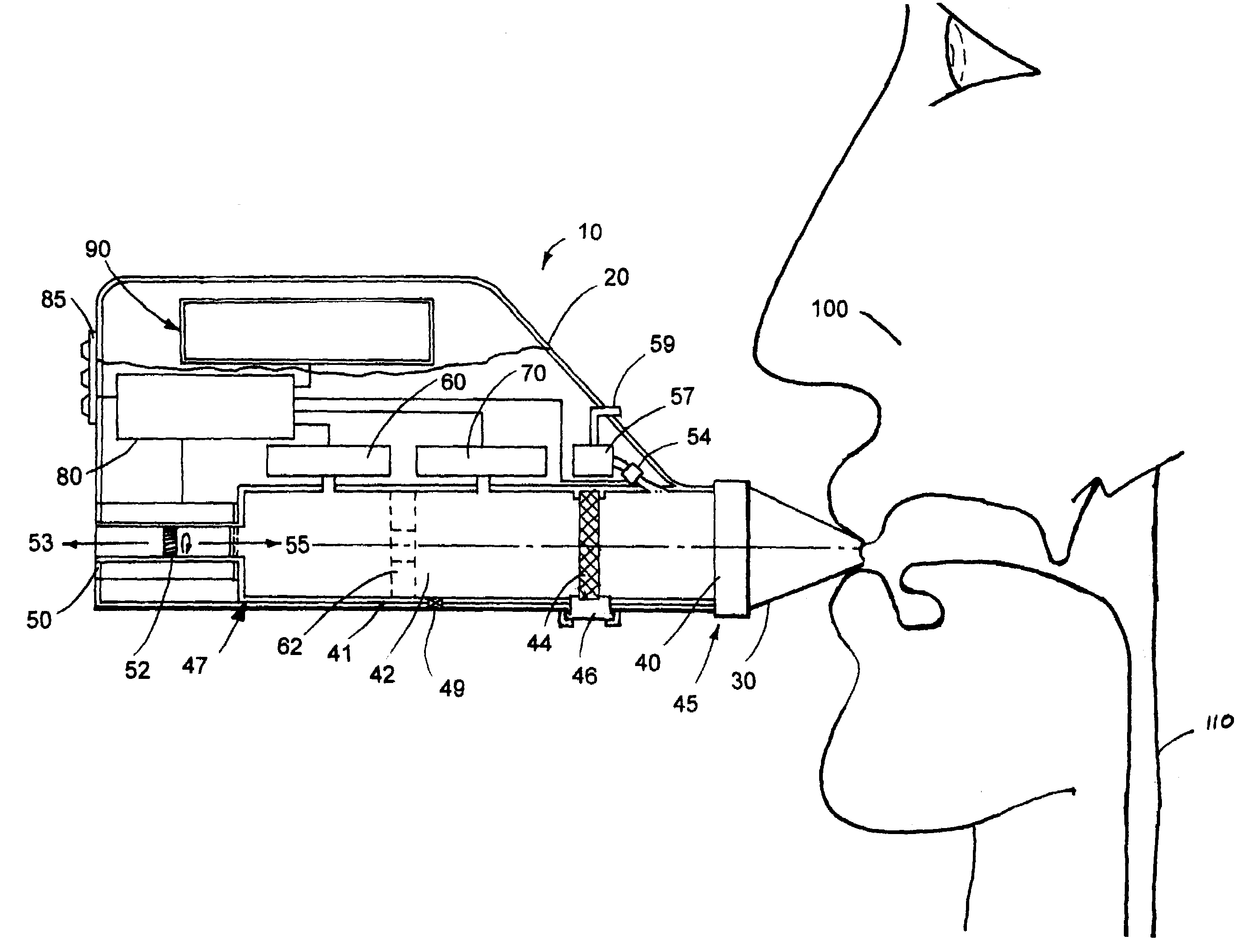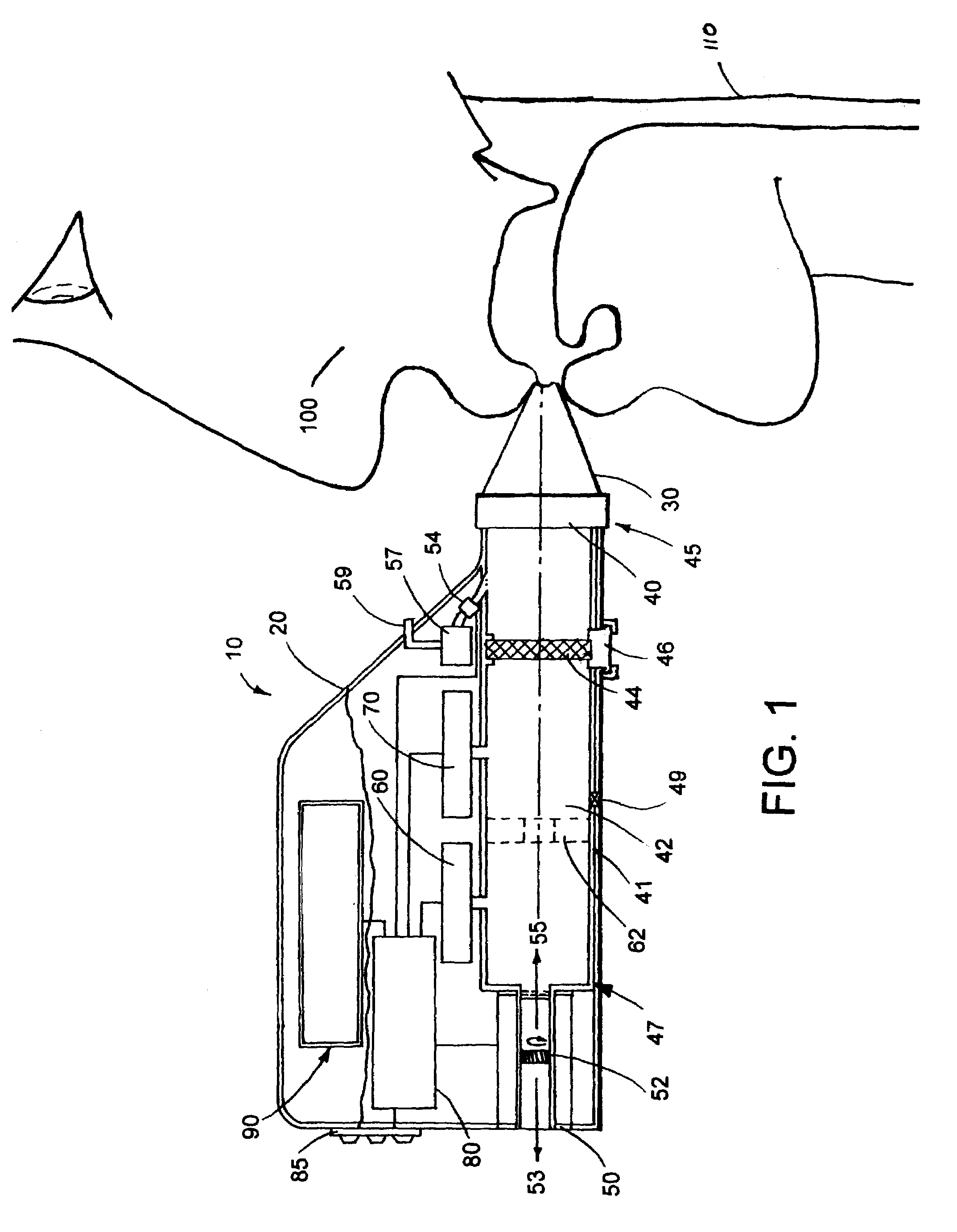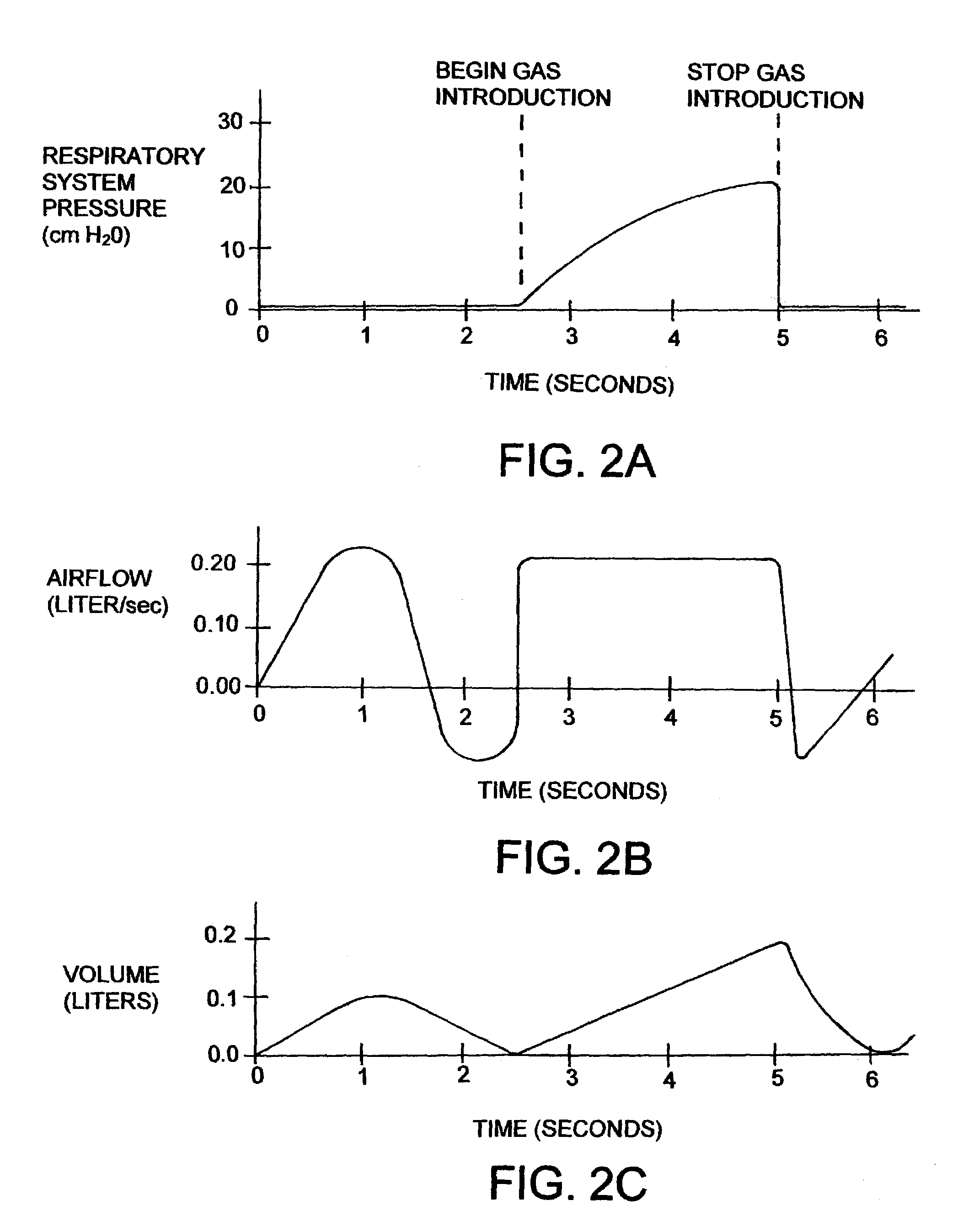Portable respiratory diagnostic device
a diagnostic device and portable technology, applied in the field of medical diagnostic devices, can solve the problems of difficult to measure respiratory parameters, inaccurate measurement of lung or airway-specific respiratory parameters, and inability to accurately reflect the actual lung and/or airway performance of the subject, so as to achieve rapid diagnosis, accurate measurement, and reliable and accurate measurement of lung and/or airway-specific parameters.
- Summary
- Abstract
- Description
- Claims
- Application Information
AI Technical Summary
Benefits of technology
Problems solved by technology
Method used
Image
Examples
Embodiment Construction
I. Overview
[0015]The portable respiratory monitoring device of the present invention is illustrated inFIG. 1 and generally designated 10. As shown, the portable device 10 includes a housing 20 within which components, including a tube 41, a pump 50, a flow sensor 70, pressure sensor 60 and a processor 80 are housed or contained. Optionally, the housing includes a keypad 85 to control the operation of the various components. A display 90 may be further joined with or disposed within the housing 20 to output data collected by the device 10. A mouthpiece 30, or optionally a mask (not shown), is releasably secured to the device and adapted to be inserted into the mouth of a subject 100 or over the nose and mouth of a subject, respectively.
[0016]In operation, the device operates in two primary modes or phases; an active mode and a passive mode. In the active mode, the pump 50 acts as a valve so that air may travel therethrough in direction 53, and / or direction 55, as shown. The subject 1...
PUM
 Login to View More
Login to View More Abstract
Description
Claims
Application Information
 Login to View More
Login to View More - R&D
- Intellectual Property
- Life Sciences
- Materials
- Tech Scout
- Unparalleled Data Quality
- Higher Quality Content
- 60% Fewer Hallucinations
Browse by: Latest US Patents, China's latest patents, Technical Efficacy Thesaurus, Application Domain, Technology Topic, Popular Technical Reports.
© 2025 PatSnap. All rights reserved.Legal|Privacy policy|Modern Slavery Act Transparency Statement|Sitemap|About US| Contact US: help@patsnap.com



